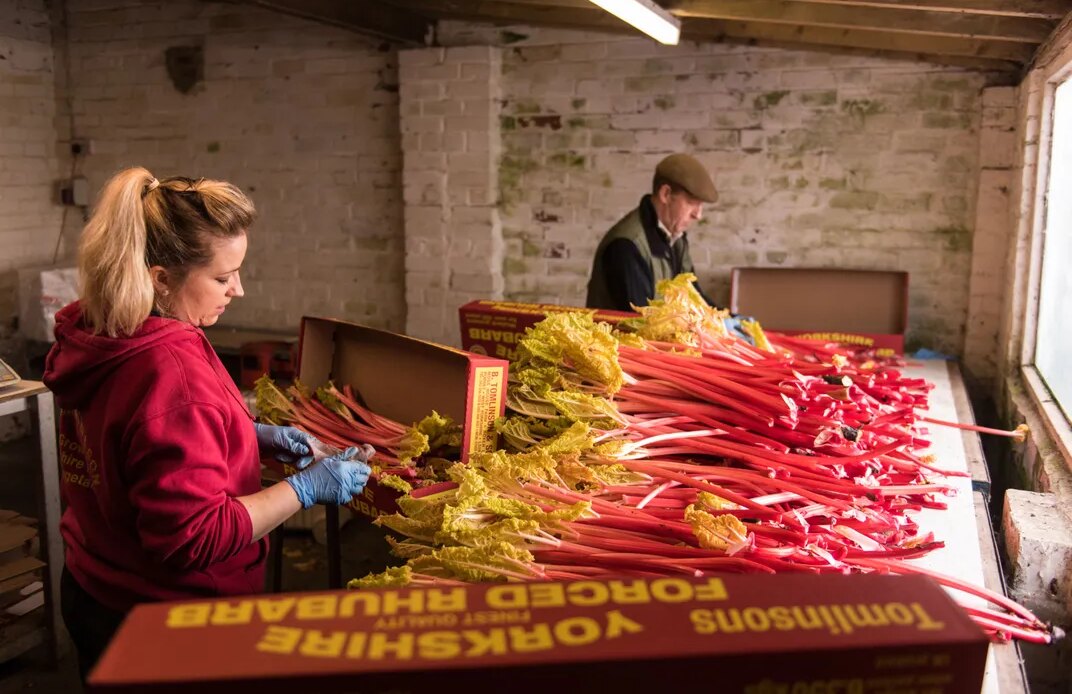Yorkshire, England, is one of the few places in the world where rhubarb is harvested the old-fashioned way: by candlelight. Every November, after the first long frost, farmers transplant their crop into windowless heated sheds, plunging thousands of plants into total darkness. The stress triggers alarmingly rapid growth. Under the right conditions, rhubarb can grow more than an inch per day. That’s fast enough to hear it.
Farmers have relied on this recipe of frost, darkness and warmth for more than 200 years. The combo tricks this bright-pink vegetable into growing sweeter, more tender stalks—a product called “forced rhubarb.” Yorkshire’s Rhubarb Triangle—a nine-square-mile patchwork of green fields and hedgerows in northern England—once produced about 90 percent of the world’s forced rhubarb. And now, like Parmesan or Champagne, Yorkshire Forced Rhubarb has a protected designation of origin from the European Union.
Today, the Rhubarb Triangle attracts thousands of tourists and foodies each year. You’d never guess that, until very recently, the industry was at risk of dying out altogether.
“The rhubarb forcing industry has shrunk back dramatically,” says Ben Asquith, the last in a long family of rhubarb growers in West Yorkshire. “Forty years ago we had over 70 families growing the crop.” Today, fewer than a dozen keep the tradition alive—but a rebound could be on the horizon.
A sweet discovery
According to legend, the method for forcing rhubarb was first discovered by accident. The year was 1817, and the setting was the Chelsea Physic Garden, a now-venerated London botanical yard that was founded in 1673 by the Worshipful Society of Apothecaries, a group dedicated to the propagation and study of medicinal plants. Rhubarb, which has been used in traditional Chinese medicine since at least 270 B.C.E, was among the society’s early collections.
Farm worker Marie Emery (left) packs forced rhubarb, which was harvested by candlelight, on Robert Tomlinson’s farm in the Rhubarb Triangle.
Oli Scarff/AFP via Getty Images
One day, a horticulturalist allegedly dropped a bucket over a rhubarb plant. A few weeks later, he discovered that the plant had responded to the darkness by growing blindingly fast, sending up dead-straight stalks in an unnerving shade of pink. Over time, growers discovered that these stalks were not only prettier than the…
Click Here to Read the Full Original Article at Travel | smithsonianmag.com…
